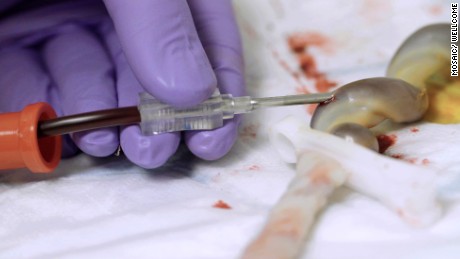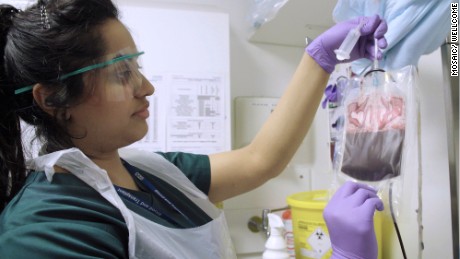‘);$vidEndSlate.removeClass(‘video__end-slate–inactive’).addClass(‘video__end-slate–active’);}};CNN.autoPlayVideoExist = (CNN.autoPlayVideoExist === true) ? true : false;var configObj = {thumb: ‘none’,video: ‘cnnmoney/2017/03/21/apple-red-iphone-7-plus-cnnomney.cnnmoney’,width: ‘100%’,height: ‘100%’,section: ‘domestic’,profile: ‘expansion’,network: ‘cnn’,markupId: ‘large-media_0’,adsection: ‘const-video-leaf’,frameWidth: ‘100%’,frameHeight: ‘100%’,posterImageOverride: {“mini”:{“height”:124,”width”:220,”type”:”jpg”,”uri”:”//i2.cdn.cnn.com/cnnnext/dam/assets/170321094521-apple-iphone-7-red-closeup-small-169.jpg”},”xsmall”:{“height”:173,”width”:307,”type”:”jpg”,”uri”:”//i2.cdn.cnn.com/cnnnext/dam/assets/170321094521-apple-iphone-7-red-closeup-medium-plus-169.jpg”},”small”:{“height”:259,”width”:460,”type”:”jpg”,”uri”:”//i2.cdn.cnn.com/cnnnext/dam/assets/170321094521-apple-iphone-7-red-closeup-large-169.jpg”},”medium”:{“height”:438,”width”:780,”type”:”jpg”,”uri”:”//i2.cdn.cnn.com/cnnnext/dam/assets/170321094521-apple-iphone-7-red-closeup-exlarge-169.jpg”},”large”:{“height”:619,”width”:1100,”type”:”jpg”,”uri”:”//i2.cdn.cnn.com/cnnnext/dam/assets/170321094521-apple-iphone-7-red-closeup-super-169.jpg”},”full16x9″:{“height”:900,”width”:1600,”type”:”jpg”,”uri”:”//i2.cdn.cnn.com/cnnnext/dam/assets/170321094521-apple-iphone-7-red-closeup-full-169.jpg”},”mini1x1″:{“height”:120,”width”:120,”type”:”jpg”,”uri”:”//i2.cdn.cnn.com/cnnnext/dam/assets/170321094521-apple-iphone-7-red-closeup-small-11.jpg”}}},autoStartVideo = false,callbackObj,containerEl,currentVideoCollection = [{“videoCMSUrl”:”/videos/cnnmoney/2017/03/21/apple-red-iphone-7-plus-cnnomney.cnnmoney”,”videoId”:”cnnmoney/2017/03/21/apple-red-iphone-7-plus-cnnomney.cnnmoney”,”videoUrl”:”/videos/cnnmoney/2017/03/21/apple-red-iphone-7-plus-cnnomney.cnnmoney”},{“videoCMSUrl”:”/video/data/3.0/video/cnnmoney/2017/03/27/bulletproof-clothing.cnnmoney/index.xml”,”videoId”:”cnnmoney/2017/03/27/bulletproof-clothing.cnnmoney”,”videoUrl”:”/videos/cnnmoney/2017/03/27/bulletproof-clothing.cnnmoney/video/playlists/technology/”},{“videoCMSUrl”:”/video/data/3.0/video/world/2017/03/14/orig-great-by-design-mask.cnn/index.xml”,”videoId”:”world/2017/03/14/orig-great-by-design-mask.cnn”,”videoUrl”:”/videos/world/2017/03/14/orig-great-by-design-mask.cnn/video/playlists/technology/”},{“videoCMSUrl”:”/video/data/3.0/video/cnnmoney/2017/03/26/electronics-ban-the-scene-at-the-airport-cnnmoney.cnn-money/index.xml”,”videoId”:”cnnmoney/2017/03/26/electronics-ban-the-scene-at-the-airport-cnnmoney.cnn-money”,”videoUrl”:”/videos/cnnmoney/2017/03/26/electronics-ban-the-scene-at-the-airport-cnnmoney.cnn-money/video/playlists/technology/”},{“videoCMSUrl”:”/video/data/3.0/video/cnnmoney/2017/03/24/hyperloop-passenger-capsule.cnn/index.xml”,”videoId”:”cnnmoney/2017/03/24/hyperloop-passenger-capsule.cnn”,”videoUrl”:”/videos/cnnmoney/2017/03/24/hyperloop-passenger-capsule.cnn/video/playlists/technology/”},{“videoCMSUrl”:”/video/data/3.0/video/cnnmoney/2017/03/24/ripcord-robot-ai-scan-sort-digitize-paper-cnnmoney.cnnmoney/index.xml”,”videoId”:”cnnmoney/2017/03/24/ripcord-robot-ai-scan-sort-digitize-paper-cnnmoney.cnnmoney”,”videoUrl”:”/videos/cnnmoney/2017/03/24/ripcord-robot-ai-scan-sort-digitize-paper-cnnmoney.cnnmoney/video/playlists/technology/”},{“videoCMSUrl”:”/video/data/3.0/video/cnnmoney/2017/03/22/male-fertility-test-smartphone-cnnmoney.cnnmoney/index.xml”,”videoId”:”cnnmoney/2017/03/22/male-fertility-test-smartphone-cnnmoney.cnnmoney”,”videoUrl”:”/videos/cnnmoney/2017/03/22/male-fertility-test-smartphone-cnnmoney.cnnmoney/video/playlists/technology/”},{“videoCMSUrl”:”/video/data/3.0/video/cnnmoney/2017/03/21/los-angeles-cleantech-incubator-cnnmoney.cnnmoney/index.xml”,”videoId”:”cnnmoney/2017/03/21/los-angeles-cleantech-incubator-cnnmoney.cnnmoney”,”videoUrl”:”/videos/cnnmoney/2017/03/21/los-angeles-cleantech-incubator-cnnmoney.cnnmoney/video/playlists/technology/”},{“videoCMSUrl”:”/video/data/3.0/video/cnnmoney/2017/03/20/jeff-bezos-amazon-robot-mars-conference-cnnmoney.cnnmoney/index.xml”,”videoId”:”cnnmoney/2017/03/20/jeff-bezos-amazon-robot-mars-conference-cnnmoney.cnnmoney”,”videoUrl”:”/videos/cnnmoney/2017/03/20/jeff-bezos-amazon-robot-mars-conference-cnnmoney.cnnmoney/video/playlists/technology/”},{“videoCMSUrl”:”/video/data/3.0/video/cnnmoney/2017/03/17/new-sponge-could-help-clean-oil-spills-cnnmoney.cnn/index.xml”,”videoId”:”cnnmoney/2017/03/17/new-sponge-could-help-clean-oil-spills-cnnmoney.cnn”,”videoUrl”:”/videos/cnnmoney/2017/03/17/new-sponge-could-help-clean-oil-spills-cnnmoney.cnn/video/playlists/technology/”},{“videoCMSUrl”:”/video/data/3.0/video/cnnmoney/2017/03/15/nasa-puffer-origami-foldable-robot-cnnmoney.cnnmoney/index.xml”,”videoId”:”cnnmoney/2017/03/15/nasa-puffer-origami-foldable-robot-cnnmoney.cnnmoney”,”videoUrl”:”/videos/cnnmoney/2017/03/15/nasa-puffer-origami-foldable-robot-cnnmoney.cnnmoney/video/playlists/technology/”},{“videoCMSUrl”:”/video/data/3.0/video/cnnmoney/2016/10/06/amazon-automated-warehouse-cnnmoney.cnnmoney/index.xml”,”videoId”:”cnnmoney/2016/10/06/amazon-automated-warehouse-cnnmoney.cnnmoney”,”videoUrl”:”/videos/cnnmoney/2016/10/06/amazon-automated-warehouse-cnnmoney.cnnmoney/video/playlists/technology/”},{“videoCMSUrl”:”/video/data/3.0/video/cnnmoney/2016/10/18/motorized-autonomous-suitcase-cnnmoney.cnnmoney/index.xml”,”videoId”:”cnnmoney/2016/10/18/motorized-autonomous-suitcase-cnnmoney.cnnmoney”,”videoUrl”:”/videos/cnnmoney/2016/10/18/motorized-autonomous-suitcase-cnnmoney.cnnmoney/video/playlists/technology/”}],currentVideoCollectionId = ”,isLivePlayer = false,moveToNextTimeout,mutePlayerEnabled = false,nextVideoId = ”,nextVideoUrl = ”,turnOnFlashMessaging = false,videoPinner,videoEndSlateImpl;if (CNN.autoPlayVideoExist === false) {autoStartVideo = true;if (autoStartVideo === true) {if (turnOnFlashMessaging === true) {autoStartVideo = false;containerEl = jQuery(document.getElementById(configObj.markupId));CNN.VideoPlayer.showFlashSlate(containerEl);} else {CNN.autoPlayVideoExist = true;}}}configObj.autostart = autoStartVideo;CNN.VideoPlayer.setPlayerProperties(configObj.markupId, autoStartVideo, isLivePlayer, mutePlayerEnabled);CNN.VideoPlayer.setFirstVideoInCollection(currentVideoCollection, configObj.markupId);var embedLinkHandler = {},videoPinner,embedCodeCopy;function onVideoCarouselItemClicked(evt) {‘use strict’;var videoId,articleElem,videoPlayer,thumbImageElem,thumbImageLargeSource,overrides = {videoCollection: this.videoCollection,autostart: false},shouldStartVideo = false,playerInstance;try {articleElem = jQuery(evt.currentTarget).find(‘article’);thumbImageElem = jQuery(articleElem).find(‘.media__image’);videoId = articleElem.data().videoId;if (CNN.VideoPlayer.getLibraryName(configObj.markupId) === ‘fave’) {playerInstance = FAVE.player.getInstance(configObj.markupId);if (CNN.Utils.existsObject(playerInstance) &&typeof playerInstance.getVideoData === ‘function’ &&playerInstance.getVideoData().id !== videoId) {/* Remove videoobject metadata script.If the user click other than initial loaded video */jQuery(articleElem).closest(‘.cn-carousel-medium-strip’).parent().find(‘script[name=”metaScript”]’).remove();playerInstance.play(videoId, overrides);}} else {videoPlayer = CNNVIDEOAPI.CNNVideoManager.getInstance().getPlayerByContainer(configObj.markupId);if (videoPlayer && videoPlayer.videoInstance) {/** if videoPlayer.videoInstance.cvp is null that means it’s not initialized yet so* pass in the thumbnail, too.*/if (!videoPlayer.videoInstance.cvp) {if (typeof thumbImageElem !== ‘undefined’ && thumbImageElem !== null) {thumbImageLargeSource = thumbImageElem.data() && thumbImageElem.data().srcLarge ? thumbImageElem.data().srcLarge : ‘none’;}overrides.thumb = thumbImageLargeSource ? thumbImageLargeSource : ‘none’;shouldStartVideo = true;}if (videoPlayer.videoInstance.config) {if (videoPlayer.videoInstance.config.video !== videoId) {/* Remove videoobject metadata script.If the user click other than initial loaded video */jQuery(articleElem).closest(‘.cn-carousel-medium-strip’).parent().find(‘script[name=”metaScript”]’).remove();CNNVIDEOAPI.CNNVideoManager.getInstance().playVideo(configObj.markupId, videoId, overrides);}/* Video player isn’t autoplay, so init itif (shouldStartVideo && this.carouselClickAutostartsVideo) {try {videoPlayer.videoInstance.start();} catch (startError) {console.log(“error in initializing video player” + startError);}}*/}}}} catch (error) {console.log(“error in initializing video player” + error);}}function setInitialVideoEmbed() {}function initialize(){var carousel = jQuery(document.getElementById(‘cn-current_video_collection’)).find(‘.js-owl-carousel’),owl;if (carousel) {carousel.find(‘.cn__column.carousel__content__item’).find(‘a’).removeAttr(‘href’);jQuery(carousel).on(‘click’, ‘.cn__column.carousel__content__item’, onVideoCarouselItemClicked);}}if (CNN.VideoPlayer.getLibraryName(configObj.markupId) === ‘videoLoader’) {window.CNNVideoAPILoadCompleteHandlers = window.CNNVideoAPILoadCompleteHandlers ? window.CNNVideoAPILoadCompleteHandlers : [];window.CNNVideoAPILoadCompleteHandlers.push(initialize);window.CNNVideoAPILoadCompleteHandlers.push(setInitialVideoEmbed);} else {initialize();}CNN.INJECTOR.executeFeature(‘videx’).done(function () {var initMeta = {id:”cnnmoney/2017/03/21/apple-red-iphone-7-plus-cnnomney.cnnmoney”, isEmbeddable: “yes”};CNN.Videx.EmbedButton.updateCode(initMeta);}).fail(function () {throw ‘Unable to fetch the videx bundle.’;});function updateCurrentlyPlaying(videoId) {var videoCollectionId = ‘current_video_collection’,videocardContents = getCurrentVideoCardContents(videoId),carousel = jQuery(document.getElementById(‘cn-current_video_collection’)).find(‘.js-owl-carousel’),domain = CNN.Host.domain || (document.location.protocol + ‘//’ + document.location.hostname),owl,$owlFirstItem,$owlPrevItem,showDetailsSpanContent = ”,gigyaShareElement,showIndex,whatsappShareElement,$carouselContentItems = jQuery(‘.carousel__content__item’, document.getElementById(‘cn-current_video_collection’));gigyaShareElement = jQuery(‘div.js-gigya-sharebar’);if (typeof gigyaShareElement !== ‘undefined’) {jQuery(gigyaShareElement).attr(‘data-title’, videocardContents.headlinePlainText || ”);jQuery(gigyaShareElement).attr(‘data-description’, videocardContents.descriptionPlainText || ”);jQuery(gigyaShareElement).attr(‘data-link’, domain + videocardContents.url || ”);jQuery(gigyaShareElement).attr(‘data-image-src’, videocardContents.media.elementContents.imageUrl || ”);}whatsappShareElement = jQuery(‘div.share-bar-whatsapp-container’);if (typeof whatsappShareElement !== ‘undefined’) {jQuery(whatsappShareElement).attr(‘data-title’, videocardContents.headlinePlainText || ”);jQuery(whatsappShareElement).attr(‘data-storyurl’, domain + videocardContents.url || ”);}if (carousel && currentVideoCollectionContainsId(videoId)) {owl = carousel.data(‘owl.carousel’) || {};showIndex = getCurrentVideoIndex(videoId);if (typeof owl.to === ‘function’) {owl.to(showIndex);}$owlPrevItem = CNN.Utils.exists(owl.$element) ? owl.$element.find(‘.cd.cd–active’) : $carouselContentItems.find(‘.cd.cd–active’);$owlPrevItem.removeClass(‘cd–active’);$owlPrevItem.find(‘.media__over-text’).remove();$owlPrevItem.find(‘.media__icon’).show();$owlFirstItem = CNN.Utils.exists(owl._items) ? jQuery(owl._items[showIndex]) : $carouselContentItems.eq(showIndex);$owlFirstItem.find(‘.cd’).addClass(‘cd–active’);$owlFirstItem.find(‘.media a:first-child’).append(‘
Now Playing
‘);if (Modernizr && !Modernizr.phone) {$owlFirstItem.find(‘.media__icon’).hide();}}CNN.Videx.Metadata.init({dateCreated: videocardContents.dateCreated,descriptionText: videocardContents.descriptionText,duration: videocardContents.duration,sourceLink: videocardContents.sourceLink,sourceName: videocardContents.sourceName,title: videocardContents.headlineText},{videoCollectionDivId: ‘cn-ndcbv’,videoDescriptionDivId: ‘js-video_description-ndcbv’,videoDurationDivId: ‘js-video_duration-ndcbv’,videoTitleDivId: ‘js-leaf-video_headline-ndcbv’,videoSourceDivId: ‘js-video_sourceName-ndcbv’});if (CNN.Utils.exists(videocardContents.showName)) {if (CNN.Utils.exists(videocardContents.showUrl)) {showDetailsSpanContent = ‘‘ + videocardContents.showName + ‘ | ‘;} else {showDetailsSpanContent = videocardContents.showName + ‘ | ‘;}}fastdom.measure(function getShowInfo() {var $show = jQuery(‘.metadata__show’),$isShowDetailsSpanExists = $show.find(‘span’).hasClass(‘metadata–show__name’),$showName = jQuery(‘.metadata–show__name’);fastdom.mutate(function updateShowInfo() {if (!$isShowDetailsSpanExists) {$show.prepend(‘‘ + showDetailsSpanContent + ‘‘);} else {$showName.html(showDetailsSpanContent);}});});if (typeof (history) !== ‘undefined’ && typeof (history.replaceState) !== ‘undefined’) {history.replaceState(”, ”, videocardContents.url);document.title = videocardContents.headlineText ? videocardContents.headlineText : ”;}}function getCurrentVideoCardContents(currentVideoId) {var containerContents = [{“branding”:””,”cardContents”:{“auxiliaryText”:””,”bannerText”:[],”bannerHasATag”:false,”bannerPosition”:””,”brandingLink”:””,”brandingImageUrl”:””,”brandingTextHead”:””,”brandingTextSub”:””,”cardSectionName”:””,”contentType”:””,”cta”:”share”,”descriptionText”:[“Apple announced a red-colored iPhone 7 and 7 Plus as part of their partnership with Red, an organization that helps fund global AIDS relief.”],”descriptionPlainText”:”Apple announced a red-colored iPhone 7 and 7 Plus as part of their partnership with Red, an organization that helps fund global AIDS relief.”,”headlinePostText”:””,”headlinePreText”:””,”headlineText”:”Apple unveils new red iPhones”,”headlinePlainText”:”Apple unveils new red iPhones”,”iconImageUrl”:””,”iconType”:”video”,”isMobileBannerText”:false,”kickerText”:””,”maximizedBannerSize”:[],”media”:{“contentType”:”image”,”type”:”element”,”cutFormat”:”16:9″,”elementContents”:{“caption”:””,”imageAlt”:”apple iphone 7 red closeup”,”imageUrl”:”//i2.cdn.cnn.com/cnnnext/dam/assets/170321094521-apple-iphone-7-red-closeup-large-169.jpg”,”label”:””,”galleryTitle”:””,”head”:””,”cuts”:{“mini”:{“height”:124,”width”:220,”type”:”jpg”,”uri”:”//i2.cdn.cnn.com/cnnnext/dam/assets/170321094521-apple-iphone-7-red-closeup-small-169.jpg”},”xsmall”:{“height”:173,”width”:307,”type”:”jpg”,”uri”:”//i2.cdn.cnn.com/cnnnext/dam/assets/170321094521-apple-iphone-7-red-closeup-medium-plus-169.jpg”},”small”:{“height”:259,”width”:460,”type”:”jpg”,”uri”:”//i2.cdn.cnn.com/cnnnext/dam/assets/170321094521-apple-iphone-7-red-closeup-large-169.jpg”},”medium”:{“height”:438,”width”:780,”type”:”jpg”,”uri”:”//i2.cdn.cnn.com/cnnnext/dam/assets/170321094521-apple-iphone-7-red-closeup-exlarge-169.jpg”},”large”:{“height”:619,”width”:1100,”type”:”jpg”,”uri”:”//i2.cdn.cnn.com/cnnnext/dam/assets/170321094521-apple-iphone-7-red-closeup-super-169.jpg”},”full16x9″:{“height”:900,”width”:1600,”type”:”jpg”,”uri”:”//i2.cdn.cnn.com/cnnnext/dam/assets/170321094521-apple-iphone-7-red-closeup-full-169.jpg”},”mini1x1″:{“height”:120,”width”:120,”type”:”jpg”,”uri”:”//i2.cdn.cnn.com/cnnnext/dam/assets/170321094521-apple-iphone-7-red-closeup-small-11.jpg”}},”responsiveImage”:true}},”noFollow”:false,”overMediaText”:””,”sectionUri”:””,”showSocialSharebar”:false,”shortUrl”:””,”statusText”:””,”statusColor”:””,”targetType”:””,”timestampDisplay”:””,”timestampUtc”:””,”lastModifiedText”:””,”lastModifiedState”:””,”type”:”card”,”url”:”/videos/cnnmoney/2017/03/21/apple-red-iphone-7-plus-cnnomney.cnnmoney”,”width”:””,”height”:””,”videoCMSUri”:”/videos/cnnmoney/2017/03/21/apple-red-iphone-7-plus-cnnomney.cnnmoney”,”videoId”:”cnnmoney/2017/03/21/apple-red-iphone-7-plus-cnnomney.cnnmoney”,”adSection”:”const-video-leaf”,”dateCreated”:”11:38 AM ET, Tue March 21, 2017″,”sourceName”:”CNNMoney”,”sourceLink”:”http://money.cnn.com/”},”contentType”:”video”,”maximizedBanner”:false,”type”:”card”},{“branding”:””,”cardContents”:{“auxiliaryText”:””,”bannerText”:[],”bannerHasATag”:false,”bannerPosition”:””,”brandingLink”:””,”brandingImageUrl”:””,”brandingTextHead”:””,”brandingTextSub”:””,”cardSectionName”:”cnnmoney”,”contentType”:””,”cta”:”share”,”descriptionText”:[“For 25 years Miguel Caballero has been outfitting world leaders in his fashionable bulletproof clothing.”],”descriptionPlainText”:”For 25 years Miguel Caballero has been outfitting world leaders in his fashionable bulletproof clothing.”,”headlinePostText”:””,”headlinePreText”:””,”headlineText”:”Presidents wear these bulletproof clothes”,”headlinePlainText”:”Presidents wear these bulletproof clothes”,”iconImageUrl”:””,”iconType”:”video”,”isMobileBannerText”:false,”kickerText”:””,”maximizedBannerSize”:[],”media”:{“contentType”:”image”,”type”:”element”,”cutFormat”:”16:9″,”elementContents”:{“caption”:”bulletproof clothing_00000000.jpg”,”imageAlt”:”bulletproof clothing_00000000″,”imageUrl”:”//i2.cdn.cnn.com/cnnnext/dam/assets/170327172538-bulletproof-clothing-00000000-large-169.jpg”,”label”:””,”galleryTitle”:””,”head”:””,”cuts”:{“mini”:{“height”:124,”width”:220,”type”:”jpg”,”uri”:”//i2.cdn.cnn.com/cnnnext/dam/assets/170327172538-bulletproof-clothing-00000000-small-169.jpg”},”xsmall”:{“height”:173,”width”:307,”type”:”jpg”,”uri”:”//i2.cdn.cnn.com/cnnnext/dam/assets/170327172538-bulletproof-clothing-00000000-medium-plus-169.jpg”},”small”:{“height”:259,”width”:460,”type”:”jpg”,”uri”:”//i2.cdn.cnn.com/cnnnext/dam/assets/170327172538-bulletproof-clothing-00000000-large-169.jpg”},”medium”:{“height”:438,”width”:780,”type”:”jpg”,”uri”:”//i2.cdn.cnn.com/cnnnext/dam/assets/170327172538-bulletproof-clothing-00000000-exlarge-169.jpg”},”large”:{“height”:619,”width”:1100,”type”:”jpg”,”uri”:”//i2.cdn.cnn.com/cnnnext/dam/assets/170327172538-bulletproof-clothing-00000000-super-169.jpg”},”full16x9″:{“height”:900,”width”:1600,”type”:”jpg”,”uri”:”//i2.cdn.cnn.com/cnnnext/dam/assets/170327172538-bulletproof-clothing-00000000-full-169.jpg”},”mini1x1″:{“height”:120,”width”:120,”type”:”jpg”,”uri”:”//i2.cdn.cnn.com/cnnnext/dam/assets/170327172538-bulletproof-clothing-00000000-small-11.jpg”}},”responsiveImage”:true},”duration”:”2:29″},”noFollow”:false,”overMediaText”:””,”sectionUri”:””,”showSocialSharebar”:false,”shortUrl”:””,”statusText”:””,”statusColor”:””,”targetType”:””,”timestampDisplay”:””,”timestampUtc”:””,”lastModifiedText”:””,”lastModifiedState”:””,”type”:”card”,”url”:”/videos/cnnmoney/2017/03/27/bulletproof-clothing.cnnmoney/video/playlists/technology/”,”width”:””,”height”:””,”videoCMSUri”:”/video/data/3.0/video/cnnmoney/2017/03/27/bulletproof-clothing.cnnmoney/index.xml”,”videoId”:”cnnmoney/2017/03/27/bulletproof-clothing.cnnmoney”,”adSection”:”const-video-leaf”,”dateCreated”:”5:12 PM ET, Mon March 27, 2017″,”sourceName”:”CNNMoney”,”sourceLink”:””,”videoCollectionUrl”:”/video/playlists/technology/”},”contentType”:”video”,”maximizedBanner”:false,”type”:”card”},{“branding”:””,”cardContents”:{“auxiliaryText”:””,”bannerText”:[],”bannerHasATag”:false,”bannerPosition”:””,”brandingLink”:””,”brandingImageUrl”:””,”brandingTextHead”:””,”brandingTextSub”:””,”cardSectionName”:”world”,”contentType”:””,”cta”:”share”,”descriptionText”:[“How the world’s first in-built thermal imaging camera could saving firefighters’ lives.”],”descriptionPlainText”:”How the world’s first in-built thermal imaging camera could saving firefighters’ lives.”,”headlinePostText”:””,”headlinePreText”:””,”headlineText”:”Firefighters see through smoke with new mask”,”headlinePlainText”:”Firefighters see through smoke with new mask”,”iconImageUrl”:””,”iconType”:”video”,”isMobileBannerText”:false,”kickerText”:””,”maximizedBannerSize”:[],”media”:{“contentType”:”image”,”type”:”element”,”cutFormat”:”16:9″,”elementContents”:{“caption”:”orig-Great by Design: Mask_00012624.jpg”,”imageAlt”:”orig-Great by Design: Mask_00012624″,”imageUrl”:”//i2.cdn.cnn.com/cnnnext/dam/assets/170314184041-orig-great-by-design-mask-00012624-large-169.jpg”,”label”:””,”galleryTitle”:””,”head”:””,”cuts”:{“mini”:{“height”:124,”width”:220,”type”:”jpg”,”uri”:”//i2.cdn.cnn.com/cnnnext/dam/assets/170314184041-orig-great-by-design-mask-00012624-small-169.jpg”},”xsmall”:{“height”:173,”width”:307,”type”:”jpg”,”uri”:”//i2.cdn.cnn.com/cnnnext/dam/assets/170314184041-orig-great-by-design-mask-00012624-medium-plus-169.jpg”},”small”:{“height”:259,”width”:460,”type”:”jpg”,”uri”:”//i2.cdn.cnn.com/cnnnext/dam/assets/170314184041-orig-great-by-design-mask-00012624-large-169.jpg”},”medium”:{“height”:438,”width”:780,”type”:”jpg”,”uri”:”//i2.cdn.cnn.com/cnnnext/dam/assets/170314184041-orig-great-by-design-mask-00012624-exlarge-169.jpg”},”large”:{“height”:619,”width”:1100,”type”:”jpg”,”uri”:”//i2.cdn.cnn.com/cnnnext/dam/assets/170314184041-orig-great-by-design-mask-00012624-super-169.jpg”},”full16x9″:{“height”:900,”width”:1600,”type”:”jpg”,”uri”:”//i2.cdn.cnn.com/cnnnext/dam/assets/170314184041-orig-great-by-design-mask-00012624-full-169.jpg”},”mini1x1″:{“height”:120,”width”:120,”type”:”jpg”,”uri”:”//i2.cdn.cnn.com/cnnnext/dam/assets/170314184041-orig-great-by-design-mask-00012624-small-11.jpg”}},”responsiveImage”:true},”duration”:”1:55″},”noFollow”:false,”overMediaText”:””,”sectionUri”:””,”showSocialSharebar”:false,”shortUrl”:””,”statusText”:””,”statusColor”:””,”targetType”:””,”timestampDisplay”:””,”timestampUtc”:””,”lastModifiedText”:””,”lastModifiedState”:””,”type”:”card”,”url”:”/videos/world/2017/03/14/orig-great-by-design-mask.cnn/video/playlists/technology/”,”width”:””,”height”:””,”videoCMSUri”:”/video/data/3.0/video/world/2017/03/14/orig-great-by-design-mask.cnn/index.xml”,”videoId”:”world/2017/03/14/orig-great-by-design-mask.cnn”,”adSection”:”const-video-leaf”,”dateCreated”:”1:44 PM ET, Tue March 14, 2017″,”sourceName”:”CNN”,”sourceLink”:””,”videoCollectionUrl”:”/video/playlists/technology/”},”contentType”:”video”,”maximizedBanner”:false,”type”:”card”},{“branding”:””,”cardContents”:{“auxiliaryText”:””,”bannerText”:[],”bannerHasATag”:false,”bannerPosition”:””,”brandingLink”:””,”brandingImageUrl”:””,”brandingTextHead”:””,”brandingTextSub”:””,”cardSectionName”:”cnnmoney”,”contentType”:””,”cta”:”share”,”descriptionText”:[“Travelers in Istanbul, Turkey, flying to the US or the UK have started having to check large electronics.”],”descriptionPlainText”:”Travelers in Istanbul, Turkey, flying to the US or the UK have started having to check large electronics.”,”headlinePostText”:””,”headlinePreText”:””,”headlineText”:”Electronics ban: The scene at the airport”,”headlinePlainText”:”Electronics ban: The scene at the airport”,”iconImageUrl”:””,”iconType”:”video”,”isMobileBannerText”:false,”kickerText”:””,”maximizedBannerSize”:[],”media”:{“contentType”:”image”,”type”:”element”,”cutFormat”:”16:9″,”elementContents”:{“caption”:”A picture taken on 24 March 2016, in a Brucargo building in Steenokkerzeelas shows one of the luggages collected from the planes which were on the tarmac at the time of the attacks, two days after a triple bomb attack, claimed by the Islamic State group, hit Brussels’ airport and the Maelbeek – Maalbeek metro station, killing 31 people and wounding 270 others.Brussels is on maximum security alert with soldiers in camouflage standing guard outside embassies and government offices and underground rail services cut between 7:00 pm and 7:00 am, as Belgian authorities face growing pressure to do more to tackle the Islamic State menace threatening the continent, even as they scrambled to track down two more men over the attacks on Brussels airport and the metro. / AFP / BELGA / LAURIE DIEFFEMBACQ / Belgium OUT (Photo credit should read LAURIE DIEFFEMBACQ/AFP/Getty Images)”,”imageAlt”:”A picture taken on 24 March 2016, in a Brucargo building in Steenokkerzeelas shows one of the luggages collected from the planes which were on the tarmac at the time of the attacks, two days after a triple bomb attack, claimed by the Islamic State group, hit Brussels’ airport and the Maelbeek – Maalbeek metro station, killing 31 people and wounding 270 others.Brussels is on maximum security alert with soldiers in camouflage standing guard outside embassies and government offices and underground rail services cut between 7:00 pm and 7:00 am, as Belgian authorities face growing pressure to do more to tackle the Islamic State menace threatening the continent, even as they scrambled to track down two more men over the attacks on Brussels airport and the metro. / AFP / BELGA / LAURIE DIEFFEMBACQ / Belgium OUT (Photo credit should read LAURIE DIEFFEMBACQ/AFP/Getty Images)”,”imageUrl”:”//i2.cdn.cnn.com/cnnnext/dam/assets/170326181519-airport-ban-on-luggage-large-169.jpg”,”label”:””,”galleryTitle”:””,”head”:””,”cuts”:{“mini”:{“height”:124,”width”:220,”type”:”jpg”,”uri”:”//i2.cdn.cnn.com/cnnnext/dam/assets/170326181519-airport-ban-on-luggage-small-169.jpg”},”xsmall”:{“height”:173,”width”:307,”type”:”jpg”,”uri”:”//i2.cdn.cnn.com/cnnnext/dam/assets/170326181519-airport-ban-on-luggage-medium-plus-169.jpg”},”small”:{“height”:259,”width”:460,”type”:”jpg”,”uri”:”//i2.cdn.cnn.com/cnnnext/dam/assets/170326181519-airport-ban-on-luggage-large-169.jpg”},”medium”:{“height”:438,”width”:780,”type”:”jpg”,”uri”:”//i2.cdn.cnn.com/cnnnext/dam/assets/170326181519-airport-ban-on-luggage-exlarge-169.jpg”},”large”:{“height”:619,”width”:1100,”type”:”jpg”,”uri”:”//i2.cdn.cnn.com/cnnnext/dam/assets/170326181519-airport-ban-on-luggage-super-169.jpg”},”full16x9″:{“height”:900,”width”:1600,”type”:”jpg”,”uri”:”//i2.cdn.cnn.com/cnnnext/dam/assets/170326181519-airport-ban-on-luggage-full-169.jpg”},”mini1x1″:{“height”:120,”width”:120,”type”:”jpg”,”uri”:”//i2.cdn.cnn.com/cnnnext/dam/assets/170326181519-airport-ban-on-luggage-small-11.jpg”}},”responsiveImage”:true},”duration”:”0:55″},”noFollow”:false,”overMediaText”:””,”sectionUri”:””,”showSocialSharebar”:false,”shortUrl”:””,”statusText”:””,”statusColor”:””,”targetType”:””,”timestampDisplay”:””,”timestampUtc”:””,”lastModifiedText”:””,”lastModifiedState”:””,”type”:”card”,”url”:”/videos/cnnmoney/2017/03/26/electronics-ban-the-scene-at-the-airport-cnnmoney.cnn-money/video/playlists/technology/”,”width”:””,”height”:””,”videoCMSUri”:”/video/data/3.0/video/cnnmoney/2017/03/26/electronics-ban-the-scene-at-the-airport-cnnmoney.cnn-money/index.xml”,”videoId”:”cnnmoney/2017/03/26/electronics-ban-the-scene-at-the-airport-cnnmoney.cnn-money”,”adSection”:”const-video-leaf”,”dateCreated”:”6:10 PM ET, Sun March 26, 2017″,”sourceName”:”CNN Money”,”sourceLink”:”http://money.cnn.com/”,”videoCollectionUrl”:”/video/playlists/technology/”},”contentType”:”video”,”maximizedBanner”:false,”type”:”card”},{“branding”:””,”cardContents”:{“auxiliaryText”:””,”bannerText”:[],”bannerHasATag”:false,”bannerPosition”:””,”brandingLink”:””,”brandingImageUrl”:””,”brandingTextHead”:””,”brandingTextSub”:””,”cardSectionName”:”cnnmoney”,”contentType”:””,”cta”:”share”,”descriptionText”:[“Hyperloop Transportation Technologies started to build its first passenger capsule for this high speed transportation system.”],”descriptionPlainText”:”Hyperloop Transportation Technologies started to build its first passenger capsule for this high speed transportation system.”,”headlinePostText”:””,”headlinePreText”:””,”headlineText”:”Hyperloop starts building a passenger capsule”,”headlinePlainText”:”Hyperloop starts building a passenger capsule”,”iconImageUrl”:””,”iconType”:”video”,”isMobileBannerText”:false,”kickerText”:””,”maximizedBannerSize”:[],”media”:{“contentType”:”image”,”type”:”element”,”cutFormat”:”16:9″,”elementContents”:{“caption”:”hyperloop passenger capsule_00000000.jpg”,”imageAlt”:”hyperloop passenger capsule_00000000″,”imageUrl”:”//i2.cdn.cnn.com/cnnnext/dam/assets/170324180816-hyperloop-passenger-capsule-00000000-large-169.jpg”,”label”:””,”galleryTitle”:””,”head”:””,”cuts”:{“mini”:{“height”:124,”width”:220,”type”:”jpg”,”uri”:”//i2.cdn.cnn.com/cnnnext/dam/assets/170324180816-hyperloop-passenger-capsule-00000000-small-169.jpg”},”xsmall”:{“height”:173,”width”:307,”type”:”jpg”,”uri”:”//i2.cdn.cnn.com/cnnnext/dam/assets/170324180816-hyperloop-passenger-capsule-00000000-medium-plus-169.jpg”},”small”:{“height”:259,”width”:460,”type”:”jpg”,”uri”:”//i2.cdn.cnn.com/cnnnext/dam/assets/170324180816-hyperloop-passenger-capsule-00000000-large-169.jpg”},”medium”:{“height”:438,”width”:780,”type”:”jpg”,”uri”:”//i2.cdn.cnn.com/cnnnext/dam/assets/170324180816-hyperloop-passenger-capsule-00000000-exlarge-169.jpg”},”large”:{“height”:619,”width”:1100,”type”:”jpg”,”uri”:”//i2.cdn.cnn.com/cnnnext/dam/assets/170324180816-hyperloop-passenger-capsule-00000000-super-169.jpg”},”full16x9″:{“height”:900,”width”:1600,”type”:”jpg”,”uri”:”//i2.cdn.cnn.com/cnnnext/dam/assets/170324180816-hyperloop-passenger-capsule-00000000-full-169.jpg”},”mini1x1″:{“height”:120,”width”:120,”type”:”jpg”,”uri”:”//i2.cdn.cnn.com/cnnnext/dam/assets/170324180816-hyperloop-passenger-capsule-00000000-small-11.jpg”}},”responsiveImage”:true},”duration”:”0:53″},”noFollow”:false,”overMediaText”:””,”sectionUri”:””,”showSocialSharebar”:false,”shortUrl”:””,”statusText”:””,”statusColor”:””,”targetType”:””,”timestampDisplay”:””,”timestampUtc”:””,”lastModifiedText”:””,”lastModifiedState”:””,”type”:”card”,”url”:”/videos/cnnmoney/2017/03/24/hyperloop-passenger-capsule.cnn/video/playlists/technology/”,”width”:””,”height”:””,”videoCMSUri”:”/video/data/3.0/video/cnnmoney/2017/03/24/hyperloop-passenger-capsule.cnn/index.xml”,”videoId”:”cnnmoney/2017/03/24/hyperloop-passenger-capsule.cnn”,”adSection”:”const-video-leaf”,”dateCreated”:”6:05 PM ET, Fri March 24, 2017″,”sourceName”:”CNN”,”sourceLink”:””,”videoCollectionUrl”:”/video/playlists/technology/”},”contentType”:”video”,”maximizedBanner”:false,”type”:”card”},{“branding”:””,”cardContents”:{“auxiliaryText”:””,”bannerText”:[],”bannerHasATag”:false,”bannerPosition”:””,”brandingLink”:””,”brandingImageUrl”:””,”brandingTextHead”:””,”brandingTextSub”:””,”cardSectionName”:”cnnmoney”,”contentType”:””,”cta”:”share”,”descriptionText”:[“Ripcord is a new company, backed by Apple co-founder Steve Wozniak, that has created a robot to sort, scan, and digitize papers for businesses.”],”descriptionPlainText”:”Ripcord is a new company, backed by Apple co-founder Steve Wozniak, that has created a robot to sort, scan, and digitize papers for businesses.”,”headlinePostText”:””,”headlinePreText”:””,”headlineText”:”This robot could help companies go paperless”,”headlinePlainText”:”This robot could help companies go paperless”,”iconImageUrl”:””,”iconType”:”video”,”isMobileBannerText”:false,”kickerText”:””,”maximizedBannerSize”:[],”media”:{“contentType”:”image”,”type”:”element”,”cutFormat”:”16:9″,”elementContents”:{“caption”:””,”imageAlt”:””,”imageUrl”:”//i2.cdn.cnn.com/cnnnext/dam/assets/170324192813-ripcord-large-169.jpg”,”label”:””,”galleryTitle”:””,”head”:””,”cuts”:{“mini”:{“height”:124,”width”:220,”type”:”jpg”,”uri”:”//i2.cdn.cnn.com/cnnnext/dam/assets/170324192813-ripcord-small-169.jpg”},”xsmall”:{“height”:173,”width”:307,”type”:”jpg”,”uri”:”//i2.cdn.cnn.com/cnnnext/dam/assets/170324192813-ripcord-medium-plus-169.jpg”},”small”:{“height”:259,”width”:460,”type”:”jpg”,”uri”:”//i2.cdn.cnn.com/cnnnext/dam/assets/170324192813-ripcord-large-169.jpg”},”medium”:{“height”:438,”width”:780,”type”:”jpg”,”uri”:”//i2.cdn.cnn.com/cnnnext/dam/assets/170324192813-ripcord-exlarge-169.jpg”},”large”:{“height”:619,”width”:1100,”type”:”jpg”,”uri”:”//i2.cdn.cnn.com/cnnnext/dam/assets/170324192813-ripcord-super-169.jpg”},”full16x9″:{“height”:900,”width”:1600,”type”:”jpg”,”uri”:”//i2.cdn.cnn.com/cnnnext/dam/assets/170324192813-ripcord-full-169.jpg”},”mini1x1″:{“height”:120,”width”:120,”type”:”jpg”,”uri”:”//i2.cdn.cnn.com/cnnnext/dam/assets/170324192813-ripcord-small-11.jpg”}},”responsiveImage”:true},”duration”:”1:07″},”noFollow”:false,”overMediaText”:””,”sectionUri”:””,”showSocialSharebar”:false,”shortUrl”:””,”statusText”:””,”statusColor”:””,”targetType”:””,”timestampDisplay”:””,”timestampUtc”:””,”lastModifiedText”:””,”lastModifiedState”:””,”type”:”card”,”url”:”/videos/cnnmoney/2017/03/24/ripcord-robot-ai-scan-sort-digitize-paper-cnnmoney.cnnmoney/video/playlists/technology/”,”width”:””,”height”:””,”videoCMSUri”:”/video/data/3.0/video/cnnmoney/2017/03/24/ripcord-robot-ai-scan-sort-digitize-paper-cnnmoney.cnnmoney/index.xml”,”videoId”:”cnnmoney/2017/03/24/ripcord-robot-ai-scan-sort-digitize-paper-cnnmoney.cnnmoney”,”adSection”:”const-video-leaf”,”dateCreated”:”7:17 PM ET, Fri March 24, 2017″,”sourceName”:”CNNMoney”,”sourceLink”:”http://money.cnn.com/”,”videoCollectionUrl”:”/video/playlists/technology/”},”contentType”:”video”,”maximizedBanner”:false,”type”:”card”},{“branding”:””,”cardContents”:{“auxiliaryText”:””,”bannerText”:[],”bannerHasATag”:false,”bannerPosition”:””,”brandingLink”:””,”brandingImageUrl”:””,”brandingTextHead”:””,”brandingTextSub”:””,”cardSectionName”:”cnnmoney”,”contentType”:””,”cta”:”share”,”descriptionText”:[“Medical researchers at Massachusetts General, Brigham & Women’s Hospital, and Harvard Medical School have devised a prototype of an at-home male fertility test that works with a smartphone.”],”descriptionPlainText”:”Medical researchers at Massachusetts General, Brigham & Women’s Hospital, and Harvard Medical School have devised a prototype of an at-home male fertility test that works with a smartphone.”,”headlinePostText”:””,”headlinePreText”:””,”headlineText”:”Testing fertility with a smartphone app”,”headlinePlainText”:”Testing fertility with a smartphone app”,”iconImageUrl”:””,”iconType”:”video”,”isMobileBannerText”:false,”kickerText”:””,”maximizedBannerSize”:[],”media”:{“contentType”:”image”,”type”:”element”,”cutFormat”:”16:9″,”elementContents”:{“caption”:””,”imageAlt”:””,”imageUrl”:”//i2.cdn.cnn.com/cnnnext/dam/assets/170303180206-ultrasound-pregnancy-large-169.jpg”,”label”:””,”galleryTitle”:””,”head”:””,”cuts”:{“mini”:{“height”:124,”width”:220,”type”:”jpg”,”uri”:”//i2.cdn.cnn.com/cnnnext/dam/assets/170303180206-ultrasound-pregnancy-small-169.jpg”},”xsmall”:{“height”:173,”width”:307,”type”:”jpg”,”uri”:”//i2.cdn.cnn.com/cnnnext/dam/assets/170303180206-ultrasound-pregnancy-medium-plus-169.jpg”},”small”:{“height”:259,”width”:460,”type”:”jpg”,”uri”:”//i2.cdn.cnn.com/cnnnext/dam/assets/170303180206-ultrasound-pregnancy-large-169.jpg”},”medium”:{“height”:438,”width”:780,”type”:”jpg”,”uri”:”//i2.cdn.cnn.com/cnnnext/dam/assets/170303180206-ultrasound-pregnancy-exlarge-169.jpg”},”large”:{“height”:619,”width”:1100,”type”:”jpg”,”uri”:”//i2.cdn.cnn.com/cnnnext/dam/assets/170303180206-ultrasound-pregnancy-super-169.jpg”},”full16x9″:{“height”:900,”width”:1600,”type”:”jpg”,”uri”:”//i2.cdn.cnn.com/cnnnext/dam/assets/170303180206-ultrasound-pregnancy-full-169.jpg”},”mini1x1″:{“height”:120,”width”:120,”type”:”jpg”,”uri”:”//i2.cdn.cnn.com/cnnnext/dam/assets/170303180206-ultrasound-pregnancy-small-11.jpg”}},”responsiveImage”:true},”duration”:”1:02″},”noFollow”:false,”overMediaText”:””,”sectionUri”:””,”showSocialSharebar”:false,”shortUrl”:””,”statusText”:””,”statusColor”:””,”targetType”:””,”timestampDisplay”:””,”timestampUtc”:””,”lastModifiedText”:””,”lastModifiedState”:””,”type”:”card”,”url”:”/videos/cnnmoney/2017/03/22/male-fertility-test-smartphone-cnnmoney.cnnmoney/video/playlists/technology/”,”width”:””,”height”:””,”videoCMSUri”:”/video/data/3.0/video/cnnmoney/2017/03/22/male-fertility-test-smartphone-cnnmoney.cnnmoney/index.xml”,”videoId”:”cnnmoney/2017/03/22/male-fertility-test-smartphone-cnnmoney.cnnmoney”,”adSection”:”const-video-leaf”,”dateCreated”:”7:13 PM ET, Wed March 22, 2017″,”sourceName”:”CNNMoney”,”sourceLink”:”http://money.cnn.com/”,”videoCollectionUrl”:”/video/playlists/technology/”},”contentType”:”video”,”maximizedBanner”:false,”type”:”card”},{“branding”:””,”cardContents”:{“auxiliaryText”:””,”bannerText”:[],”bannerHasATag”:false,”bannerPosition”:””,”brandingLink”:””,”brandingImageUrl”:””,”brandingTextHead”:””,”brandingTextSub”:””,”cardSectionName”:”cnnmoney”,”contentType”:””,”cta”:”share”,”descriptionText”:[“At the Los Angeles Cleantech Incubator, 44 startups are sharing resources while building environmentally conscious tech.”],”descriptionPlainText”:”At the Los Angeles Cleantech Incubator, 44 startups are sharing resources while building environmentally conscious tech.”,”headlinePostText”:””,”headlinePreText”:””,”headlineText”:”Dozens of green tech startups under one roof”,”headlinePlainText”:”Dozens of green tech startups under one roof”,”iconImageUrl”:””,”iconType”:”video”,”isMobileBannerText”:false,”kickerText”:””,”maximizedBannerSize”:[],”media”:{“contentType”:”image”,”type”:”element”,”cutFormat”:”16:9″,”elementContents”:{“caption”:””,”imageAlt”:””,”imageUrl”:”//i2.cdn.cnn.com/cnnnext/dam/assets/170321195515-laci-workshop-large-169.jpg”,”label”:””,”galleryTitle”:””,”head”:””,”cuts”:{“mini”:{“height”:124,”width”:220,”type”:”jpg”,”uri”:”//i2.cdn.cnn.com/cnnnext/dam/assets/170321195515-laci-workshop-small-169.jpg”},”xsmall”:{“height”:173,”width”:307,”type”:”jpg”,”uri”:”//i2.cdn.cnn.com/cnnnext/dam/assets/170321195515-laci-workshop-medium-plus-169.jpg”},”small”:{“height”:259,”width”:460,”type”:”jpg”,”uri”:”//i2.cdn.cnn.com/cnnnext/dam/assets/170321195515-laci-workshop-large-169.jpg”},”medium”:{“height”:438,”width”:780,”type”:”jpg”,”uri”:”//i2.cdn.cnn.com/cnnnext/dam/assets/170321195515-laci-workshop-exlarge-169.jpg”},”large”:{“height”:619,”width”:1100,”type”:”jpg”,”uri”:”//i2.cdn.cnn.com/cnnnext/dam/assets/170321195515-laci-workshop-super-169.jpg”},”full16x9″:{“height”:900,”width”:1600,”type”:”jpg”,”uri”:”//i2.cdn.cnn.com/cnnnext/dam/assets/170321195515-laci-workshop-full-169.jpg”},”mini1x1″:{“height”:120,”width”:120,”type”:”jpg”,”uri”:”//i2.cdn.cnn.com/cnnnext/dam/assets/170321195515-laci-workshop-small-11.jpg”}},”responsiveImage”:true},”duration”:”3:40″},”noFollow”:false,”overMediaText”:””,”sectionUri”:””,”showSocialSharebar”:false,”shortUrl”:””,”statusText”:””,”statusColor”:””,”targetType”:””,”timestampDisplay”:””,”timestampUtc”:””,”lastModifiedText”:””,”lastModifiedState”:””,”type”:”card”,”url”:”/videos/cnnmoney/2017/03/21/los-angeles-cleantech-incubator-cnnmoney.cnnmoney/video/playlists/technology/”,”width”:””,”height”:””,”videoCMSUri”:”/video/data/3.0/video/cnnmoney/2017/03/21/los-angeles-cleantech-incubator-cnnmoney.cnnmoney/index.xml”,”videoId”:”cnnmoney/2017/03/21/los-angeles-cleantech-incubator-cnnmoney.cnnmoney”,”adSection”:”const-video-leaf”,”dateCreated”:”7:55 PM ET, Tue March 21, 2017″,”sourceName”:”CNNMoney”,”sourceLink”:”http://money.cnn.com/”,”videoCollectionUrl”:”/video/playlists/technology/”},”contentType”:”video”,”maximizedBanner”:false,”type”:”card”},{“branding”:””,”cardContents”:{“auxiliaryText”:””,”bannerText”:[],”bannerHasATag”:false,”bannerPosition”:””,”brandingLink”:””,”brandingImageUrl”:””,”brandingTextHead”:””,”brandingTextSub”:””,”cardSectionName”:”cnnmoney”,”contentType”:””,”cta”:”share”,”descriptionText”:[“Amazon’s CEO donned a huge robot suit at the company’s annual MARS conference.”],”descriptionPlainText”:”Amazon’s CEO donned a huge robot suit at the company’s annual MARS conference.”,”headlinePostText”:””,”headlinePreText”:””,”headlineText”:”See Jeff Bezos test the giant robot of your nightmares”,”headlinePlainText”:”See Jeff Bezos test the giant robot of your nightmares”,”iconImageUrl”:””,”iconType”:”video”,”isMobileBannerText”:false,”kickerText”:””,”maximizedBannerSize”:[],”media”:{“contentType”:”image”,”type”:”element”,”cutFormat”:”16:9″,”elementContents”:{“caption”:””,”imageAlt”:””,”imageUrl”:”//i2.cdn.cnn.com/cnnnext/dam/assets/170320145517-jeff-bezos-robot-large-169.png”,”label”:””,”galleryTitle”:””,”head”:””,”cuts”:{“mini”:{“height”:124,”width”:220,”type”:”jpg”,”uri”:”//i2.cdn.cnn.com/cnnnext/dam/assets/170320145517-jeff-bezos-robot-small-169.png”},”xsmall”:{“height”:173,”width”:307,”type”:”jpg”,”uri”:”//i2.cdn.cnn.com/cnnnext/dam/assets/170320145517-jeff-bezos-robot-medium-plus-169.png”},”small”:{“height”:259,”width”:460,”type”:”jpg”,”uri”:”//i2.cdn.cnn.com/cnnnext/dam/assets/170320145517-jeff-bezos-robot-large-169.png”},”medium”:{“height”:438,”width”:780,”type”:”jpg”,”uri”:”//i2.cdn.cnn.com/cnnnext/dam/assets/170320145517-jeff-bezos-robot-exlarge-169.png”},”large”:{“height”:619,”width”:1100,”type”:”jpg”,”uri”:”//i2.cdn.cnn.com/cnnnext/dam/assets/170320145517-jeff-bezos-robot-super-169.png”},”full16x9″:{“height”:900,”width”:1600,”type”:”jpg”,”uri”:”//i2.cdn.cnn.com/cnnnext/dam/assets/170320145517-jeff-bezos-robot-full-169.png”},”mini1x1″:{“height”:120,”width”:120,”type”:”jpg”,”uri”:”//i2.cdn.cnn.com/cnnnext/dam/assets/170320145517-jeff-bezos-robot-small-11.png”}},”responsiveImage”:true},”duration”:”1:00″},”noFollow”:false,”overMediaText”:””,”sectionUri”:””,”showSocialSharebar”:false,”shortUrl”:””,”statusText”:””,”statusColor”:””,”targetType”:””,”timestampDisplay”:””,”timestampUtc”:””,”lastModifiedText”:””,”lastModifiedState”:””,”type”:”card”,”url”:”/videos/cnnmoney/2017/03/20/jeff-bezos-amazon-robot-mars-conference-cnnmoney.cnnmoney/video/playlists/technology/”,”width”:””,”height”:””,”videoCMSUri”:”/video/data/3.0/video/cnnmoney/2017/03/20/jeff-bezos-amazon-robot-mars-conference-cnnmoney.cnnmoney/index.xml”,”videoId”:”cnnmoney/2017/03/20/jeff-bezos-amazon-robot-mars-conference-cnnmoney.cnnmoney”,”adSection”:”const-video-leaf”,”dateCreated”:”2:55 PM ET, Mon March 20, 2017″,”sourceName”:”CNNMoney”,”sourceLink”:”http://money.cnn.com/”,”videoCollectionUrl”:”/video/playlists/technology/”},”contentType”:”video”,”maximizedBanner”:false,”type”:”card”},{“branding”:””,”cardContents”:{“auxiliaryText”:””,”bannerText”:[],”bannerHasATag”:false,”bannerPosition”:””,”brandingLink”:””,”brandingImageUrl”:””,”brandingTextHead”:””,”brandingTextSub”:””,”cardSectionName”:”cnnmoney”,”contentType”:””,”cta”:”share”,”descriptionText”:[“Scientists at the government funded Argonne National Laboratory invented the Oleo Sponge to help clean the oil spills.”],”descriptionPlainText”:”Scientists at the government funded Argonne National Laboratory invented the Oleo Sponge to help clean the oil spills.”,”headlinePostText”:””,”headlinePreText”:””,”headlineText”:”New sponge could help clean oil spills”,”headlinePlainText”:”New sponge could help clean oil spills”,”iconImageUrl”:””,”iconType”:”video”,”isMobileBannerText”:false,”kickerText”:””,”maximizedBannerSize”:[],”media”:{“contentType”:”image”,”type”:”element”,”cutFormat”:”16:9″,”elementContents”:{“caption”:””,”imageAlt”:””,”imageUrl”:”//i2.cdn.cnn.com/cnnnext/dam/assets/170317134149-sponge-that-soaks-up-oil-large-169.jpg”,”label”:””,”galleryTitle”:””,”head”:””,”cuts”:{“mini”:{“height”:124,”width”:220,”type”:”jpg”,”uri”:”//i2.cdn.cnn.com/cnnnext/dam/assets/170317134149-sponge-that-soaks-up-oil-small-169.jpg”},”xsmall”:{“height”:173,”width”:307,”type”:”jpg”,”uri”:”//i2.cdn.cnn.com/cnnnext/dam/assets/170317134149-sponge-that-soaks-up-oil-medium-plus-169.jpg”},”small”:{“height”:259,”width”:460,”type”:”jpg”,”uri”:”//i2.cdn.cnn.com/cnnnext/dam/assets/170317134149-sponge-that-soaks-up-oil-large-169.jpg”},”medium”:{“height”:438,”width”:780,”type”:”jpg”,”uri”:”//i2.cdn.cnn.com/cnnnext/dam/assets/170317134149-sponge-that-soaks-up-oil-exlarge-169.jpg”},”large”:{“height”:619,”width”:1100,”type”:”jpg”,”uri”:”//i2.cdn.cnn.com/cnnnext/dam/assets/170317134149-sponge-that-soaks-up-oil-super-169.jpg”},”full16x9″:{“height”:900,”width”:1600,”type”:”jpg”,”uri”:”//i2.cdn.cnn.com/cnnnext/dam/assets/170317134149-sponge-that-soaks-up-oil-full-169.jpg”},”mini1x1″:{“height”:120,”width”:120,”type”:”jpg”,”uri”:”//i2.cdn.cnn.com/cnnnext/dam/assets/170317134149-sponge-that-soaks-up-oil-small-11.jpg”}},”responsiveImage”:true},”duration”:”1:12″},”noFollow”:false,”overMediaText”:””,”sectionUri”:””,”showSocialSharebar”:false,”shortUrl”:””,”statusText”:””,”statusColor”:””,”targetType”:””,”timestampDisplay”:””,”timestampUtc”:””,”lastModifiedText”:””,”lastModifiedState”:””,”type”:”card”,”url”:”/videos/cnnmoney/2017/03/17/new-sponge-could-help-clean-oil-spills-cnnmoney.cnn/video/playlists/technology/”,”width”:””,”height”:””,”videoCMSUri”:”/video/data/3.0/video/cnnmoney/2017/03/17/new-sponge-could-help-clean-oil-spills-cnnmoney.cnn/index.xml”,”videoId”:”cnnmoney/2017/03/17/new-sponge-could-help-clean-oil-spills-cnnmoney.cnn”,”adSection”:”const-video-leaf”,”dateCreated”:”1:34 PM ET, Fri March 17, 2017″,”sourceName”:”CNN”,”sourceLink”:”http://money.cnn.com/”,”videoCollectionUrl”:”/video/playlists/technology/”},”contentType”:”video”,”maximizedBanner”:false,”type”:”card”},{“branding”:””,”cardContents”:{“auxiliaryText”:””,”bannerText”:[],”bannerHasATag”:false,”bannerPosition”:””,”brandingLink”:””,”brandingImageUrl”:””,”brandingTextHead”:””,”brandingTextSub”:””,”cardSectionName”:”cnnmoney”,”contentType”:””,”cta”:”share”,”descriptionText”:[“PUFFER is a tiny, foldable robot that will help NASA researchers explore rough terrains in outer space.”],”descriptionPlainText”:”PUFFER is a tiny, foldable robot that will help NASA researchers explore rough terrains in outer space.”,”headlinePostText”:””,”headlinePreText”:””,”headlineText”:”See NASA’s origami robot in action”,”headlinePlainText”:”See NASA’s origami robot in action”,”iconImageUrl”:””,”iconType”:”video”,”isMobileBannerText”:false,”kickerText”:””,”maximizedBannerSize”:[],”media”:{“contentType”:”image”,”type”:”element”,”cutFormat”:”16:9″,”elementContents”:{“caption”:””,”imageAlt”:””,”imageUrl”:”//i2.cdn.cnn.com/cnnnext/dam/assets/170315164701-puffer-nasa-robot-large-169.jpg”,”label”:””,”galleryTitle”:””,”head”:””,”cuts”:{“mini”:{“height”:124,”width”:220,”type”:”jpg”,”uri”:”//i2.cdn.cnn.com/cnnnext/dam/assets/170315164701-puffer-nasa-robot-small-169.jpg”},”xsmall”:{“height”:173,”width”:307,”type”:”jpg”,”uri”:”//i2.cdn.cnn.com/cnnnext/dam/assets/170315164701-puffer-nasa-robot-medium-plus-169.jpg”},”small”:{“height”:259,”width”:460,”type”:”jpg”,”uri”:”//i2.cdn.cnn.com/cnnnext/dam/assets/170315164701-puffer-nasa-robot-large-169.jpg”},”medium”:{“height”:438,”width”:780,”type”:”jpg”,”uri”:”//i2.cdn.cnn.com/cnnnext/dam/assets/170315164701-puffer-nasa-robot-exlarge-169.jpg”},”large”:{“height”:619,”width”:1100,”type”:”jpg”,”uri”:”//i2.cdn.cnn.com/cnnnext/dam/assets/170315164701-puffer-nasa-robot-super-169.jpg”},”full16x9″:{“height”:900,”width”:1600,”type”:”jpg”,”uri”:”//i2.cdn.cnn.com/cnnnext/dam/assets/170315164701-puffer-nasa-robot-full-169.jpg”},”mini1x1″:{“height”:120,”width”:120,”type”:”jpg”,”uri”:”//i2.cdn.cnn.com/cnnnext/dam/assets/170315164701-puffer-nasa-robot-small-11.jpg”}},”responsiveImage”:true},”duration”:”1:03″},”noFollow”:false,”overMediaText”:””,”sectionUri”:””,”showSocialSharebar”:false,”shortUrl”:””,”statusText”:””,”statusColor”:””,”targetType”:””,”timestampDisplay”:””,”timestampUtc”:””,”lastModifiedText”:””,”lastModifiedState”:””,”type”:”card”,”url”:”/videos/cnnmoney/2017/03/15/nasa-puffer-origami-foldable-robot-cnnmoney.cnnmoney/video/playlists/technology/”,”width”:””,”height”:””,”videoCMSUri”:”/video/data/3.0/video/cnnmoney/2017/03/15/nasa-puffer-origami-foldable-robot-cnnmoney.cnnmoney/index.xml”,”videoId”:”cnnmoney/2017/03/15/nasa-puffer-origami-foldable-robot-cnnmoney.cnnmoney”,”adSection”:”const-video-leaf”,”dateCreated”:”4:46 PM ET, Wed March 15, 2017″,”sourceName”:”CNNMoney”,”sourceLink”:”http://mone”,”videoCollectionUrl”:”/video/playlists/technology/”},”contentType”:”video”,”maximizedBanner”:false,”type”:”card”},{“branding”:””,”cardContents”:{“auxiliaryText”:””,”bannerText”:[],”bannerHasATag”:false,”bannerPosition”:””,”brandingLink”:””,”brandingImageUrl”:””,”brandingTextHead”:””,”brandingTextSub”:””,”cardSectionName”:”cnnmoney”,”contentType”:””,”cta”:”share”,”descriptionText”:[“Watch robots, conveyor belts, and employees transport a package through Amazon’s high-tech fulfillment centers.”],”descriptionPlainText”:”Watch robots, conveyor belts, and employees transport a package through Amazon’s high-tech fulfillment centers.”,”headlinePostText”:””,”headlinePreText”:””,”headlineText”:”Human hands barely touch Amazon packages”,”headlinePlainText”:”Human hands barely touch Amazon packages”,”iconImageUrl”:””,”iconType”:”video”,”isMobileBannerText”:false,”kickerText”:””,”maximizedBannerSize”:[],”media”:{“contentType”:”image”,”type”:”element”,”cutFormat”:”16:9″,”elementContents”:{“caption”:”Follow an Amazon pkg through the automated Amazon fulfillment center.”,”imageAlt”:”Follow an Amazon pkg through the automated Amazon fulfillment center.”,”imageUrl”:”//i2.cdn.cnn.com/cnnnext/dam/assets/161006083615-amazon-warehouse-shelves-large-169.jpg”,”label”:””,”galleryTitle”:””,”head”:””,”cuts”:{“mini”:{“height”:124,”width”:220,”type”:”jpg”,”uri”:”//i2.cdn.cnn.com/cnnnext/dam/assets/161006083615-amazon-warehouse-shelves-small-169.jpg”},”xsmall”:{“height”:173,”width”:307,”type”:”jpg”,”uri”:”//i2.cdn.cnn.com/cnnnext/dam/assets/161006083615-amazon-warehouse-shelves-medium-plus-169.jpg”},”small”:{“height”:259,”width”:460,”type”:”jpg”,”uri”:”//i2.cdn.cnn.com/cnnnext/dam/assets/161006083615-amazon-warehouse-shelves-large-169.jpg”},”medium”:{“height”:438,”width”:780,”type”:”jpg”,”uri”:”//i2.cdn.cnn.com/cnnnext/dam/assets/161006083615-amazon-warehouse-shelves-exlarge-169.jpg”},”large”:{“height”:619,”width”:1100,”type”:”jpg”,”uri”:”//i2.cdn.cnn.com/cnnnext/dam/assets/161006083615-amazon-warehouse-shelves-super-169.jpg”},”full16x9″:{“height”:900,”width”:1600,”type”:”jpg”,”uri”:”//i2.cdn.cnn.com/cnnnext/dam/assets/161006083615-amazon-warehouse-shelves-full-169.jpg”},”mini1x1″:{“height”:120,”width”:120,”type”:”jpg”,”uri”:”//i2.cdn.cnn.com/cnnnext/dam/assets/161006083615-amazon-warehouse-shelves-small-11.jpg”}},”responsiveImage”:true},”duration”:”1:39″},”noFollow”:false,”overMediaText”:””,”sectionUri”:””,”showSocialSharebar”:false,”shortUrl”:””,”statusText”:””,”statusColor”:””,”targetType”:””,”timestampDisplay”:””,”timestampUtc”:””,”lastModifiedText”:””,”lastModifiedState”:””,”type”:”card”,”url”:”/videos/cnnmoney/2016/10/06/amazon-automated-warehouse-cnnmoney.cnnmoney/video/playlists/technology/”,”width”:””,”height”:””,”videoCMSUri”:”/video/data/3.0/video/cnnmoney/2016/10/06/amazon-automated-warehouse-cnnmoney.cnnmoney/index.xml”,”videoId”:”cnnmoney/2016/10/06/amazon-automated-warehouse-cnnmoney.cnnmoney”,”adSection”:”const-video-leaf”,”dateCreated”:”8:21 AM ET, Thu October 6, 2016″,”sourceName”:”CNNMoney”,”sourceLink”:”http://money.cnn.com/”,”videoCollectionUrl”:”/video/playlists/technology/”},”contentType”:”video”,”maximizedBanner”:false,”type”:”card”},{“branding”:””,”cardContents”:{“auxiliaryText”:””,”bannerText”:[],”bannerHasATag”:false,”bannerPosition”:””,”brandingLink”:””,”brandingImageUrl”:””,”brandingTextHead”:””,”brandingTextSub”:””,”cardSectionName”:”cnnmoney”,”contentType”:””,”cta”:”share”,”descriptionText”:[“Travelmate Robotics created a motorized autonomous suitcase that may make your airport travel easier.”],”descriptionPlainText”:”Travelmate Robotics created a motorized autonomous suitcase that may make your airport travel easier.”,”headlinePostText”:””,”headlinePreText”:””,”headlineText”:”Your luggage could follow you around the airport”,”headlinePlainText”:”Your luggage could follow you around the airport”,”iconImageUrl”:””,”iconType”:”video”,”isMobileBannerText”:false,”kickerText”:””,”maximizedBannerSize”:[],”media”:{“contentType”:”image”,”type”:”element”,”cutFormat”:”16:9″,”elementContents”:{“caption”:”Travelmate Robotics created a motorized autonomous suitcase that may make your airport travel easier”,”imageAlt”:”Travelmate Robotics created a motorized autonomous suitcase that may make your airport travel easier”,”imageUrl”:”//i2.cdn.cnn.com/cnnnext/dam/assets/161018084420-travelmate-suitcase-large-169.jpg”,”label”:””,”galleryTitle”:””,”head”:””,”cuts”:{“mini”:{“height”:124,”width”:220,”type”:”jpg”,”uri”:”//i2.cdn.cnn.com/cnnnext/dam/assets/161018084420-travelmate-suitcase-small-169.jpg”},”xsmall”:{“height”:173,”width”:307,”type”:”jpg”,”uri”:”//i2.cdn.cnn.com/cnnnext/dam/assets/161018084420-travelmate-suitcase-medium-plus-169.jpg”},”small”:{“height”:259,”width”:460,”type”:”jpg”,”uri”:”//i2.cdn.cnn.com/cnnnext/dam/assets/161018084420-travelmate-suitcase-large-169.jpg”},”medium”:{“height”:438,”width”:780,”type”:”jpg”,”uri”:”//i2.cdn.cnn.com/cnnnext/dam/assets/161018084420-travelmate-suitcase-exlarge-169.jpg”},”large”:{“height”:619,”width”:1100,”type”:”jpg”,”uri”:”//i2.cdn.cnn.com/cnnnext/dam/assets/161018084420-travelmate-suitcase-super-169.jpg”},”full16x9″:{“height”:900,”width”:1600,”type”:”jpg”,”uri”:”//i2.cdn.cnn.com/cnnnext/dam/assets/161018084420-travelmate-suitcase-full-169.jpg”},”mini1x1″:{“height”:120,”width”:120,”type”:”jpg”,”uri”:”//i2.cdn.cnn.com/cnnnext/dam/assets/161018084420-travelmate-suitcase-small-11.jpg”}},”responsiveImage”:true},”duration”:”0:56″},”noFollow”:false,”overMediaText”:””,”sectionUri”:””,”showSocialSharebar”:false,”shortUrl”:””,”statusText”:””,”statusColor”:””,”targetType”:””,”timestampDisplay”:””,”timestampUtc”:””,”lastModifiedText”:””,”lastModifiedState”:””,”type”:”card”,”url”:”/videos/cnnmoney/2016/10/18/motorized-autonomous-suitcase-cnnmoney.cnnmoney/video/playlists/technology/”,”width”:””,”height”:””,”videoCMSUri”:”/video/data/3.0/video/cnnmoney/2016/10/18/motorized-autonomous-suitcase-cnnmoney.cnnmoney/index.xml”,”videoId”:”cnnmoney/2016/10/18/motorized-autonomous-suitcase-cnnmoney.cnnmoney”,”adSection”:”const-video-leaf”,”dateCreated”:”8:25 AM ET, Tue October 18, 2016″,”sourceName”:”CNNMoney”,”sourceLink”:”http://money.cnn.com/”,”videoCollectionUrl”:”/video/playlists/technology/”},”contentType”:”video”,”maximizedBanner”:false,”type”:”card”}],cardContents,i;for (i = 0; i 0) {for (i = 0; i 0) {for (i = 0; i 0) {for (i = 0; i 0) {nextPlay = currentVideoCollection[getNextVideoIndex(currentVideoId)].videoId;if (nextPlay === undefined || nextPlay === null) {nextPlay = currentVideoCollection[0].videoId;}moveToNextTimeout = setTimeout(function () {overrides = {videoCollection: currentVideoCollection,autostart: true};if (CNN.VideoPlayer.getLibraryName(configObj.markupId) === ‘fave’) {FAVE.player.getInstance(configObj.markupId).play(nextPlay, overrides);} else {CNNVIDEOAPI.CNNVideoManager.getInstance().playVideo(configObj.markupId, nextPlay, overrides);}}, nextVideoPlayTimeout);}}var decorateVideoApi = function(){/* if this happens before the video API loads it gets deleted. */CNN.VideoPlayer.showSpinner = function showSpinner(containerId) {if (Modernizr && !Modernizr.phone && !Modernizr.mobile && !Modernizr.tablet) {jQuery(document.getElementById((‘spinner_’ + containerId).replace(‘#’, ”))).show();}};CNN.VideoPlayer.hideSpinner = function hideSpinner(containerId) {if (Modernizr && !Modernizr.phone && !Modernizr.mobile && !Modernizr.tablet) {jQuery(document.getElementById((‘spinner_’ + containerId).replace(‘#’, ”))).hide();}};CNN.VideoPlayer.hideThumbnail = function hideThumbnail(containerId) {if (Modernizr && !Modernizr.phone && !Modernizr.mobile && !Modernizr.tablet) {jQuery(document.getElementById(containerId + ‘–thumbnail’)).hide();}};};callbackObj = {onPlayerReady: function (containerId) {CNN.INJECTOR.getNameSpaceFeature(‘CNN.VideoPlayer.showSpinner’).fail(decorateVideoApi);var containerClassId;CNN.VideoPlayer.reportLoadTime(containerId);CNN.VideoPlayer.handleAdOnCVPVisibilityChange(containerId, CNN.pageVis.isDocumentVisible());if (Modernizr && !Modernizr.phone && !Modernizr.mobile && !Modernizr.tablet) {containerClassId = ‘#’ + containerId;if (jQuery(containerClassId).parents(‘.js-pg-rail-tall__head’).length > 0) {videoPinner = new CNN.VideoPinner(containerClassId);videoPinner.setIsVideoCollection(true);videoPinner.init();} else {CNN.VideoPlayer.hideThumbnail(containerId);}}},onContentEntryLoad: function(containerId, playerId, contentid, isQueue) {CNN.VideoPlayer.showSpinner(containerId);CNN.VideoPlayer.isFirstVideoInCollection(containerId, contentid);},onAdPlay: function (containerId, cvpId, token, mode, id, duration, blockId, adType) {clearTimeout(moveToNextTimeout);if (blockId === 0) {(new Image()).src = “//traffic.outbrain.com/network/trackpxl?advid=814&action=view”;}CNN.VideoPlayer.hideSpinner(containerId);if (Modernizr && !Modernizr.phone && !Modernizr.mobile && !Modernizr.tablet) {if (typeof videoPinner !== ‘undefined’ && videoPinner !== null) {videoPinner.setIsPlaying(true);videoPinner.handleOnVideoPlay();videoPinner.animateDown();}}},onContentPlay: function (containerId, cvpId, contentId) {/** When the video content starts playing, the companion ad* layout (if it was set when the ad played) should switch* back to epic ad layout. onContentPlay calls updateCompanionLayout* with ‘restoreEpicAds’ layout to make this switch and removes FW* with ‘removeFreewheel’ so you don’t see double ads. If a user* clicks another video midway, onContentBegin will add FW back*/if (CNN.companion && typeof CNN.companion.updateCompanionLayout === ‘function’) {CNN.companion.updateCompanionLayout(‘removeFreewheel’);CNN.companion.updateCompanionLayout(‘restoreEpicAds’);}clearTimeout(moveToNextTimeout);CNN.VideoPlayer.hideSpinner(containerId);var idx,playerInstance,prevVideoId = (window.jsmd && window.jsmd.v && (window.jsmd.v.eVar18 || window.jsmd.v.eVar4)) || ”;if (CNN.VideoPlayer.getLibraryName(configObj.markupId) === ‘fave’) {playerInstance = FAVE.player.getInstance(containerId);} else {playerInstance = containerId && window.cnnVideoManager.getPlayerByContainer(containerId).videoInstance.cvp || null;}if (playerInstance && typeof playerInstance.reportAnalytics === ‘function’) {if (prevVideoId.length === 0 && document.referrer && document.referrer.search(/\/videos\//) >= 0) {prevVideoId = document.referrer.replace(/^(?:http|https)\:\/\/[^\/]\/videos\/(.+\.\w+)(?:\/video\/playlists\/.*)?$/, ‘/video/$1’);if (prevVideoId === document.referrer) {prevVideoId = ”;}}if (jQuery.isArray(currentVideoCollection) && currentVideoCollection.length > 0) {idx = getNextVideoIndex(contentId);nextVideoId = currentVideoCollection[idx].videoId;nextVideoUrl = currentVideoCollection[idx].videoUrl;currentVideoCollectionId = (window.jsmd && window.jsmd.v && window.jsmd.v.eVar60) || nextVideoUrl.replace(/^.+\/video\/playlists\/(.+)\//, ‘$1’);}playerInstance.reportAnalytics(‘videoPageData’, {videoCollection: currentVideoCollectionId,videoBranding: CNN.omniture.branding_content_page,templateType: CNN.omniture.template_type,nextVideo: nextVideoId,previousVideo: prevVideoId,referrerType: ”,referrerUrl: document.referrer});}if (Modernizr && !Modernizr.phone && !Modernizr.mobile && !Modernizr.tablet) {if (typeof videoPinner !== ‘undefined’ && videoPinner !== null) {videoPinner.setIsPlaying(true);videoPinner.handleOnVideoPlay();videoPinner.animateDown();}}},onContentReplayRequest: function (containerId, cvpId, contentId) {if (Modernizr && !Modernizr.phone && !Modernizr.mobile && !Modernizr.tablet) {if (typeof videoPinner !== ‘undefined’ && videoPinner !== null) {videoPinner.setIsPlaying(true);var $endSlate = jQuery(document.getElementById(containerId)).parent().find(‘.js-video__end-slate’).eq(0);if ($endSlate.length > 0) {$endSlate.removeClass(‘video__end-slate–active’).addClass(‘video__end-slate–inactive’);}}}},onContentMetadata: function (containerId, playerId, metadata, contentId, duration, width, height) {if (CNN.Utils.exists(metadata)) {try {if (CNN.VideoPlayer.getLibraryName(containerId) === ‘fave’) {CNN.Videx.EmbedButton.updateCode(metadata);} else {CNN.Videx.EmbedButton.updateCode(JSON.parse(metadata));}} catch (e) {console.log(‘Invalid video metadata JSON.’);}}},onContentBegin: function (containerId, cvpId, contentId) {CNN.VideoPlayer.reverseAutoMute(containerId);CNN.VideoPlayer.isFirstVideoInCollection(containerId, contentId);/** Before the video ad starts, the freewheel companion ad* html needs to be placed on the page so that it can be* triggered by Freewheel to display the companion ad.* onContentBegin triggers updateCompanionLayout which* handles the logic to switch from epic to companion ads*/if (CNN.companion && typeof CNN.companion.updateCompanionLayout === ‘function’) {CNN.companion.updateCompanionLayout(‘removeEpicAds’);CNN.companion.updateCompanionLayout(‘restoreFreewheel’);}clearTimeout(moveToNextTimeout);fastdom.mutate(function () {CNN.share.reloadShareBar();});updateCurrentlyPlaying(contentId);jQuery(document).triggerVideoContentStarted();},onContentComplete: function (containerId, cvpId, contentId) {navigateToNextVideo(contentId);},onContentEnd: function (containerId, cvpId, contentId) {/** When the video content ends playing, remove the epic ad* and prepare the freewheel companion ad for the next video*/if (CNN.companion && typeof CNN.companion.updateCompanionLayout === ‘function’) {CNN.companion.updateCompanionLayout(‘removeEpicAds’);CNN.companion.updateCompanionLayout(‘restoreFreewheel’);}navigateToNextVideo(contentId);if (Modernizr && !Modernizr.phone && !Modernizr.mobile && !Modernizr.tablet) {if (typeof videoPinner !== ‘undefined’ && videoPinner !== null) {videoPinner.setIsPlaying(false);}}},onCVPVisibilityChange: function (containerId, cvpId, visible) {CNN.VideoPlayer.handleAdOnCVPVisibilityChange(containerId, visible);}};if (typeof configObj.context !== ‘string’ || configObj.context.length



